Doubts About Identity
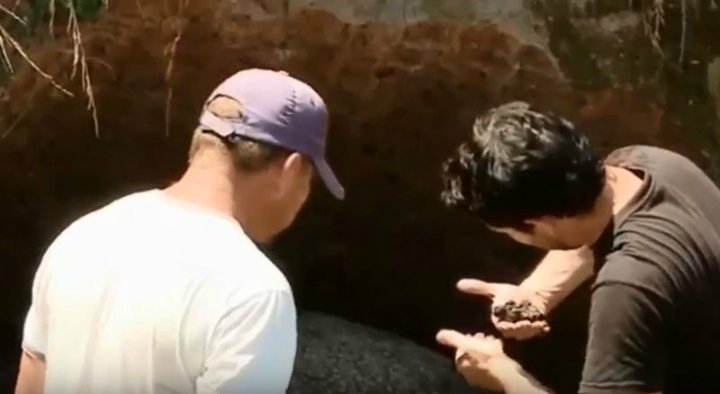 As soon as this conclusion to which the scientists had reached surfaced in the media everyone was left shocked. According to the experts, the discovery was a very rare one. Though, there were some people who questioned the validity of the judgment and the results claiming that it was possible to preserve the shell in intentionally seeing its perfect condition and the characteristic upright position in which the glyptodon are believed to die after being turned over on their shell. This sparked a completely new controversy surrounding the discovery.
As soon as this conclusion to which the scientists had reached surfaced in the media everyone was left shocked. According to the experts, the discovery was a very rare one. Though, there were some people who questioned the validity of the judgment and the results claiming that it was possible to preserve the shell in intentionally seeing its perfect condition and the characteristic upright position in which the glyptodon are believed to die after being turned over on their shell. This sparked a completely new controversy surrounding the discovery.
Could It Be A Hoax?
 People who were doubting the claims of the scientists were supported by other experts as well claiming that the discovery was a staged hoax. There were numerous versions of the whole discovery given by numerous scientists who studied the relic directly along with those who did it through photographs and footage of the shell. Prof. Adrian Lister of the Natural History Museum in London went on to say that it was not very rare to witness the kind of fossil being found from the Argentinian farm as erosion prone flowing bodies of water generally are capable of revealing age-old shells and bones. He added that the reason for it being in perfect condition was the mud around it which kept it safe. But, this was not all…
People who were doubting the claims of the scientists were supported by other experts as well claiming that the discovery was a staged hoax. There were numerous versions of the whole discovery given by numerous scientists who studied the relic directly along with those who did it through photographs and footage of the shell. Prof. Adrian Lister of the Natural History Museum in London went on to say that it was not very rare to witness the kind of fossil being found from the Argentinian farm as erosion prone flowing bodies of water generally are capable of revealing age-old shells and bones. He added that the reason for it being in perfect condition was the mud around it which kept it safe. But, this was not all…
The Mystery Explained
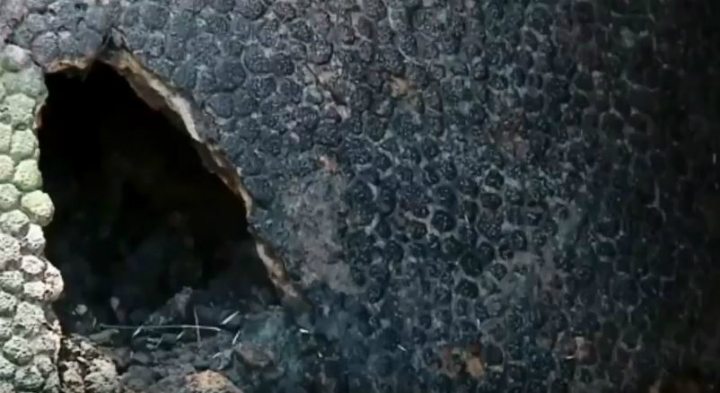 “It would be an ingenious hoaxer who would construct such a thing,” said Prof. Lister. “The shell looks like a genuine glyptodon shell, and the hole is “wear and tear,” not where the head or tail went,” he added. Lister’s statements were supported by other experts too. “There is no doubt that it looks like a glyptodon,” remarked paleontologist Alejandro Kramarz of the Bernadino Rivadavia Natural Science Museum. Yeah, it’s obvious that you might be thinking about the unusual and ancient creature that we have been talking about. Don’t worry we’ll clear that doubt in your mind too. Read on…
“It would be an ingenious hoaxer who would construct such a thing,” said Prof. Lister. “The shell looks like a genuine glyptodon shell, and the hole is “wear and tear,” not where the head or tail went,” he added. Lister’s statements were supported by other experts too. “There is no doubt that it looks like a glyptodon,” remarked paleontologist Alejandro Kramarz of the Bernadino Rivadavia Natural Science Museum. Yeah, it’s obvious that you might be thinking about the unusual and ancient creature that we have been talking about. Don’t worry we’ll clear that doubt in your mind too. Read on…
Uncovering Mysteries Of The Glyptodon
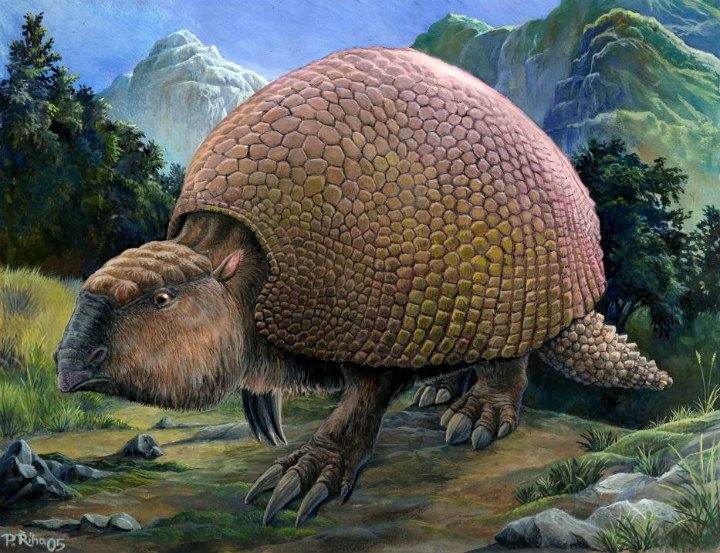 Glyptodons are not among the prominent creatures like the giant sloth and saber-toothed cats from the Ice age that have mentioned frequently by the experts. Glyptodons existed on the planet during the last Ice Age. Well, one gets an idea of its structure from the fact that they weighed and sized similarly to a Volkswagen Beetle. Their most unique feature was their armor which was round plated and was around two inches thick. Apart from it they also had a bony cap on the top of their skull majorly for protection with a spiked tail to fight against predators. They are known to be calm herbivores who lived near lakes and rivers.
Glyptodons are not among the prominent creatures like the giant sloth and saber-toothed cats from the Ice age that have mentioned frequently by the experts. Glyptodons existed on the planet during the last Ice Age. Well, one gets an idea of its structure from the fact that they weighed and sized similarly to a Volkswagen Beetle. Their most unique feature was their armor which was round plated and was around two inches thick. Apart from it they also had a bony cap on the top of their skull majorly for protection with a spiked tail to fight against predators. They are known to be calm herbivores who lived near lakes and rivers.
Ancient Origins
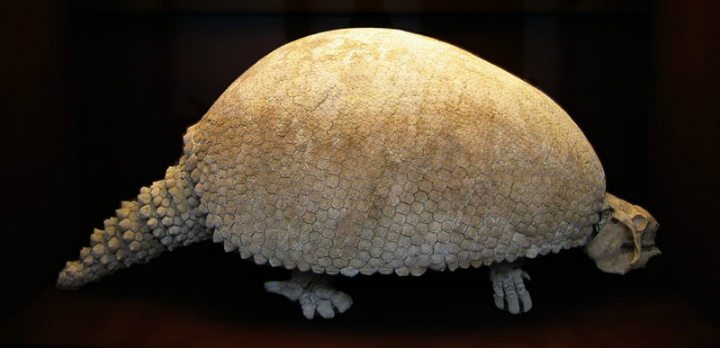 The fact that glyptodons are believed to originate and evolve in South America strengthens the validity of the fossil found on the farm of Antonio Nievas. The creature existed on the planet for millions of years. Argentina, Brazil, and Uruguay are the countries where there remains have been found by the archaeologists. It is also said that the species migrated towards present-day U.S.A after the continent of South and North America fused during the Great American Interchange.
The fact that glyptodons are believed to originate and evolve in South America strengthens the validity of the fossil found on the farm of Antonio Nievas. The creature existed on the planet for millions of years. Argentina, Brazil, and Uruguay are the countries where there remains have been found by the archaeologists. It is also said that the species migrated towards present-day U.S.A after the continent of South and North America fused during the Great American Interchange.
Extinct But Not Irrelevant
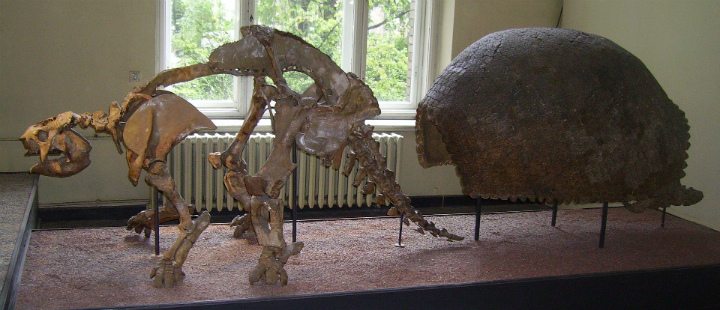 “The animal became extinct thousands of years ago and it is very common to find their fossils in this region,” said paleontologist Alejandro Kramarz in an interview with AFP. Surprisingly, experts have established their connection with another species that were the reason for their extinction. Humans, yes, are believed to have been the reason for their extinction 10,000 years ago as they killed the creature and used their shell for protection. The period when humans arrived in the Americas the species went extinct is a popular theory. Well, you would have surely seen their modern day ancestors…
“The animal became extinct thousands of years ago and it is very common to find their fossils in this region,” said paleontologist Alejandro Kramarz in an interview with AFP. Surprisingly, experts have established their connection with another species that were the reason for their extinction. Humans, yes, are believed to have been the reason for their extinction 10,000 years ago as they killed the creature and used their shell for protection. The period when humans arrived in the Americas the species went extinct is a popular theory. Well, you would have surely seen their modern day ancestors…
